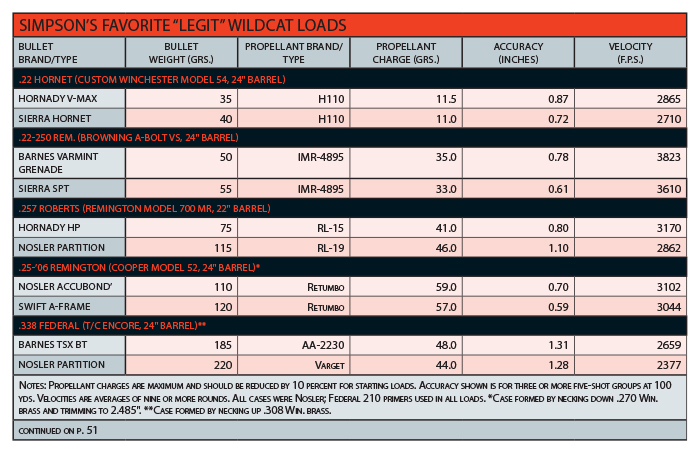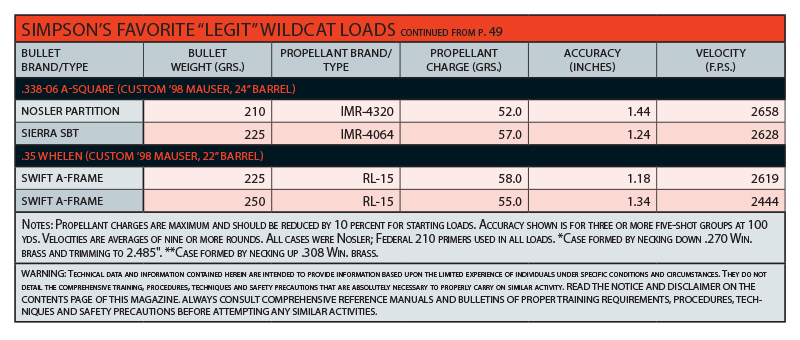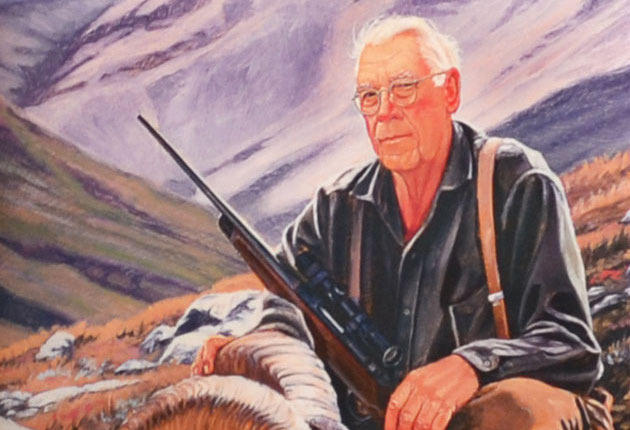Somebody is having a LOT of fun!!

👀WATCH: @DeptVetAffairs bureaucrat Kevin Friel told @RepRosendale that HE WOULD NOT COMPLY with GOA-backed legislation to restore a quarter of a million veterans gun rights—EVEN IF CONGRESS PASSED THE LAW.🤯🤯 https://t.co/0SCG8HtKia pic.twitter.com/eKAdzYh9jH
— Gun Owners of America (@GunOwners) July 10, 2024
The ALTOR Zipgun. A 9mm Zero.
Wildcat Cartridges That Went Legit

It may be hard to believe, but hundreds, if not thousands, of wildcat cartridges have been created through the years, and several books have been devoted to the topic. A couple of my favorite titles, both of which were written during the late 1940s, are Wildcat Cartridges by Richard F. Simmons and Woodchucks and Woodchuck Rifles by Charles S. Landis. Creating cartridges that offered performance unavailable from commercial ammunition-at least in the minds and perhaps the hands of their creators-got its start among varmint shooters during the late 1800s and peaked about three decades later. Today’s hunters, varminters and target shooters continue to develop cartridges with certain exceptional characteristics, claimed to be superior to available factory loads, but the golden era of wildcatting is long gone.
Some wildcats of yesteryear were no more complicated than changing the neck diameter of an existing factory cartridge case. An example is Parker O. Ackley’s .17 Pee Wee, formed by necking down the .30 Carbine case for 0.172-inch bullets. Moving to the opposite extreme in difficulty, we have Ackley’s .228 Belted Magnum. After special dies were used to swage a head-spacing belt on the .30-’06 Sprg. case, it was shortened, necked down and then fire-formed to minimum body taper and a sharper shoulder angle. As unforgettable names go, the .170 Landis Rimless Super Eyebunger may take the cake. On the .30 Rem. case, it was created by Charles S. Landis-who was probably responsible for the demise of more woodchucks than anyone before or since his time.
A few wildcats became so popular that their fans believed them destined for high-volume factory manufacture, but very few actually made it. During the 1940s, the .219 Donaldson Wasp on the .219 Zipper case absolutely dominated a new shooting sport called benchrest competition while the .22-3000 Lovell on the .25-20 Single Shot case was the apple of varmint shooters’ eyes all across America. Then in 1950 came a new factory cartridge called .222 Rem., and both wildcats were soon forgotten.
Here is a look at a few of the wildcats that beat the odds and continue in commercial production.
.22 Hornet
Loaded with blackpowder and a lead bullet with a nominal diameter of 0.226 inches, the 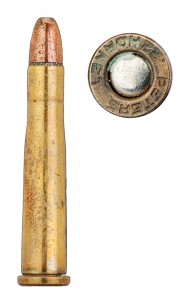 .22-13-45 Winchester Centerfire (WCF) was introduced in 1885. During the late 1920s, G.L. Wotkyns, A.L. Woodworth and G.A. Woody, who were associated with Springfield Armory in Massachusetts, decided to load the .22 WCF case with smokeless propellant and jacketed bullets made for the .22 Velo Dog pistol cartridge. Since the 1922 Springfield barrels they used had a groove diameter of 0.223 inches, the bullets were drawn down to that diameter.
.22-13-45 Winchester Centerfire (WCF) was introduced in 1885. During the late 1920s, G.L. Wotkyns, A.L. Woodworth and G.A. Woody, who were associated with Springfield Armory in Massachusetts, decided to load the .22 WCF case with smokeless propellant and jacketed bullets made for the .22 Velo Dog pistol cartridge. Since the 1922 Springfield barrels they used had a groove diameter of 0.223 inches, the bullets were drawn down to that diameter.
An article written by Wotkyns on the new cartridge was published in the June 1930 issue of The American Rifleman, and Col. Townsend Whelen followed up with his report on the cartridge in the January 1931 issue. Soon thereafter, the Hercules Powder Co. developed a propellant specifically for the cartridge and, since it increased velocity to 2400 f.p.s., it became known as No. 2400. And so the .22 Hornet was born.
In 1930, Griffin & Howe introduced custom rifles in .22 Hornet built on 1922 Springfield actions converted to center-fire. Other actions were also used; one in my battery was built during the 1930s on a single-shot conversion of the 1898 Krag by Adolph Niedner. Winchester began loading the .22 Hornet in January 1931, and the first factory rifle chambered for it was the Savage Model 23D in 1932. It was followed by the Winchester Model 54 in 1933. The barrels of those and other early rifles have a groove diameter of 0.223 inches while later rifles are 0.224 inches. This is why Sierra and Hornady continue to offer 40- and 45-grain bullets in both diameters.
Early rifles as well as some made today have a rifling twist rate of 1:16-inch, which is too slow to stabilize bullets longer than 0.535 inches. And 0.535 inches just happens to be the length of the Sierra 45-grain Hornet. The Kimber Model 82 of yesteryear had a faster 1:14-inch rate of twist, as does the present Ruger Model 77/22H. They will stabilize heavier bullets but due to the relatively low velocities allowed by the small case, thin-jacketed 40- and 45-grain bullets designed specifically for the .22 Hornet are best for use on varmints.
I fell in love with the .22 Hornet when, at a very early age, I discovered how much farther away a friend’s Savage Model 219 would bag a crow than my Marlin 39A in .22 Long Rifle. That led to eventually collecting rifles chambered for the little cartridge. I still have a few of them with my favorite (and most accurate) being a custom Winchester Model 54 built during the 1930s by the Hart Arms Co. of Cleveland, Ohio.
.257 Roberts
The team of N.H. (Ned) Roberts, F.J. Sage and rifle builder Adolph Niedner are usually  credited with being first to neck down the 7×57 mm Mauser case to .25 cal. At the time, L.C. Welden, who was the chief ballistician at Hercules during the 1920s, considered a case shoulder angle of 15 degrees (about the same as for the .30-30 Win.) to be ideal for the quick-burning propellants available during the 1920s; so that’s what the team used for their wildcat. Niedner built the first rifles in .25 Roberts, and by the early 1930s it was also available in rifles built by Griffin & Howe.
credited with being first to neck down the 7×57 mm Mauser case to .25 cal. At the time, L.C. Welden, who was the chief ballistician at Hercules during the 1920s, considered a case shoulder angle of 15 degrees (about the same as for the .30-30 Win.) to be ideal for the quick-burning propellants available during the 1920s; so that’s what the team used for their wildcat. Niedner built the first rifles in .25 Roberts, and by the early 1930s it was also available in rifles built by Griffin & Howe.
There are actually three different versions of the cartridge. When Roberts formed the original, he necked down the 7×57 mm case and slightly shortened its neck. When Griffin & Howe started building rifles for it, the 15-degree shoulder angle was retained but the case was left full length and the chamber neck reamed accordingly. Remington began loading the cartridge in 1934 and introduced it in the company’s Model 30 rifle. But prior to doing so, Remington modified the G&H version by moving the shoulder forward a bit and increasing the angle to just over 20 degrees. It also renamed it .257 Roberts.
It was once a popular practice among handloaders to increase chamber throat length in rifles such as the Remington Model 30, Winchester Model 54 and Model 70 so bullets could be seated farther out of the propellant space of the case. From that technique was born the 3-inch .257 Roberts. The modification allowed heavier charges to be used for an increase in velocity, and it was a great success until Remington began loading a long-action cartridge called the .25-’06 Rem.
I have had an on-again, off-again love affair with the .257 Roberts for many years, and it has absolutely nothing to do with the cartridge. When hunting deer I prefer bullets weighing 115 to 120 grains and the 1:10-inch twist, which is standard for the cartridge, doesn’t always shoot them accurately. If ever I decide to build a rifle in .257 Roberts it will have a 1:9-inch twist rate.
.22-250 Remington
Back in the 1920s, a gunsmith by the name of Jerry Gebby spent a day with rifle designer 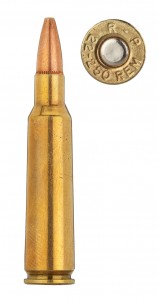 and manufacturer Charles Newton. Gebby had been superintendent at the Frigidaire unit of General Motors, which at the time was the largest manufacturer of .50 BMG barrels in the United States. Among other things, Newton had designed a couple of cartridges for Savage called the .250-3000 and .22 High-Power. He later necked down the .250 Savage case for the 0.228-inch bullet of the .22 High-Power but Savage never got around to chambering a rifle for it.
and manufacturer Charles Newton. Gebby had been superintendent at the Frigidaire unit of General Motors, which at the time was the largest manufacturer of .50 BMG barrels in the United States. Among other things, Newton had designed a couple of cartridges for Savage called the .250-3000 and .22 High-Power. He later necked down the .250 Savage case for the 0.228-inch bullet of the .22 High-Power but Savage never got around to chambering a rifle for it.
During his visit with Newton, Gebby obtained samples of several cartridges, including the .22 on the .250 Savage case. When making the decision to begin chambering rifles for it during the 1930s, he wisely chose the more readily available bullet diameter of 0.224 inches. Gebby decided to call the cartridge .22 Varminter and, in an attempt to maintain ownership of the wildcat, he had the name copyrighted. Other gunsmiths who were also building rifles chambered for the same cartridge got around that obstacle by simply stamping barrels “.22-250.”
During the late 1950s, Col. Townsend Whelen described the .22-250 as the most popular of all wildcat cartridges. Remington began loading it in 1965 but was not the first company to offer a factory rifle chambered for it. Browning had that honor, building rifles on the Sako action starting in 1963.
.25-’06 Remington
During the 1920s a number of people necked down the .30-’06 Sprg. case for 0.257-inch 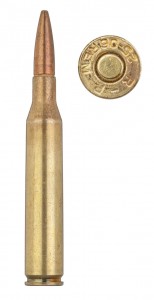 bullets, but the name most often associated with doing so has, for many years, been Adolph Niedner, the owner of Niedner Rifle Corp. of Dowagiac, Mich. He called it the .25 High Power Special and, since it was developed for long-range woodchuck shooting, his favorite load was an 87-grain bullet pushed along at 3200 f.p.s. by 44.0 grains of now-obsolete Hercules No. 20 propellant. It did not take long for big-game hunters to discover the cartridge as well and while it proved to be best suited for use on deer-size game at long range, some used it successfully on larger animals. One was oil tycoon F.H. Riggall who used a Niedner rifle in .25 Special and a 100-grain bullet at 3000 f.p.s. to take what was described as a “very large” Canadian grizzly.
bullets, but the name most often associated with doing so has, for many years, been Adolph Niedner, the owner of Niedner Rifle Corp. of Dowagiac, Mich. He called it the .25 High Power Special and, since it was developed for long-range woodchuck shooting, his favorite load was an 87-grain bullet pushed along at 3200 f.p.s. by 44.0 grains of now-obsolete Hercules No. 20 propellant. It did not take long for big-game hunters to discover the cartridge as well and while it proved to be best suited for use on deer-size game at long range, some used it successfully on larger animals. One was oil tycoon F.H. Riggall who used a Niedner rifle in .25 Special and a 100-grain bullet at 3000 f.p.s. to take what was described as a “very large” Canadian grizzly.
The .25 Special caught on and, as other gunsmiths chambered rifles for it through the years, it became more commonly known as the .25-’06. Propellants available in the old days produced only slightly higher velocities than were possible with the smaller .257 Roberts, but that changed during the 1940s with the availability of a slow-burning, military-surplus propellant called “IMR-4350 Data Powder.” It was so called because load data for IMR-4350 could be safely used. Bruce Hodgdon, who began selling the propellant in brown paper bags at 60 cents per pound, eventually renamed it H4831 and if not for that, the .25-’06 would likely have disappeared many years ago.
I began hunting with a custom .25-’06-chambered rifle several years before Remington adopted it in 1969 and have used it to take quite a bit of game through the years. When loaded with a 75-grain bullet at 3600 f.p.s. it is potent groundhog medicine at long range; although cartridges of smaller caliber and less recoil may be better suited for that. I have friends who have taken a number of elk with the .25-’06, but it is at its very best when loaded with a good bullet weighing from 115 to 120 grains and used on deer-size game in open country.
.338 Federal
I first read about the .338 Federal almost 40 years ago when it went by a different name. 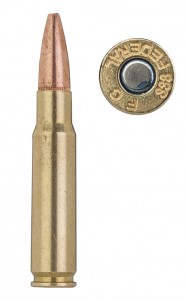 After an unpleasant encounter with a grizzly, Roy Smith decided to re-barrel his Winchester Model 88 for a cartridge he called the .33-308. In the May-June 1974 issue of Rifle magazine, Smith wrote about forming cases by expanding the necks of .308 Win. brass for 0.338-inch bullets. It was easily accomplished by running them over a tapered expander button in an RCBS full-length resizing die.
After an unpleasant encounter with a grizzly, Roy Smith decided to re-barrel his Winchester Model 88 for a cartridge he called the .33-308. In the May-June 1974 issue of Rifle magazine, Smith wrote about forming cases by expanding the necks of .308 Win. brass for 0.338-inch bullets. It was easily accomplished by running them over a tapered expander button in an RCBS full-length resizing die.
I did not get around to hunting with the .338-08 until a few months before it was introduced in 2006 as the .338 Federal. At the time no factory rifle was chambered for it, so the guys at Federal rounded up a couple of Sako rifles in .308 Win. and re-barreled them. During the 2006 Colorado season, I used one of those rifles to bag an elk with the “new” cartridge. I had the pick of two loads from Federal to use on the hunt, and since the one with the Barnes 185-grain TSX was more accurate, I chose that one.
In my opinion, the .338 Federal is great little cartridge, one with performance far exceeding what its appearance might indicate.
.338-’06 A-Square
During the late 1930s, Charles O’Neil, Elmer Keith and Don Hopkins came up with the  O.K.H. line of wildcat cartridges. One, called the .333 OKH was on the .30-’06 Sprg. case and used 0.333″ bullets that had to be imported from England, where they were made for the .333 Jeffery. Vernon Speer at Speer bullets eventually began offering that diameter but replaced it with 0.338 inch soon after Winchester introduced the .338 Win. Mag. in 1958. From that point on most wildcatters who wanted a rifle with .333 OKH performance switched to the slightly larger bullet and in doing so created the .338-’06.
O.K.H. line of wildcat cartridges. One, called the .333 OKH was on the .30-’06 Sprg. case and used 0.333″ bullets that had to be imported from England, where they were made for the .333 Jeffery. Vernon Speer at Speer bullets eventually began offering that diameter but replaced it with 0.338 inch soon after Winchester introduced the .338 Win. Mag. in 1958. From that point on most wildcatters who wanted a rifle with .333 OKH performance switched to the slightly larger bullet and in doing so created the .338-’06.
During the late 1990s A-Square’s Art Alphin received SAAMI approval of the .338-’06, and since then it has been known as the .338-06 A-Square. I have a custom switch-barrel rifle on the ’98 Mauser action with barrels in .270 Win. and .338-’06, and the latter barrel loves Nosler Custom ammunition loaded with 225-grain AccuBond bullets. Unprimed cases are available from Nosler, or it can be easily formed by necking up the .30-’06 Sprg. case or necking down the .35 Whelen case (as shown here). Plenty of loading data is available in reloading manuals from Hodgdon, Nosler, Hornady and Barnes.
The .338-’06 is a great cartridge and while it does not come as close to .338 Win. Mag. performance as some of its fans might claim, a 250-grain bullet at 2500 f.p.s. covers almost as much hunting territory with a bit less recoil.
.35 Whelen
If all the energy generated through the years by those who have debated the origin of the 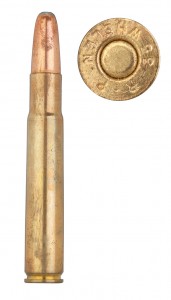 .35 Whelen could somehow have been captured and converted to electricity, it would likely be sufficient to keep all lights in the city of Casper, Wyo., burning brightly for several years. Some say necking up the .30-’06 Sprg. case for a 0.358-inch bullet was Townsend Whelen’s idea. And since the .25 Whelen, .38 Whelen and .400 Whelen were all his ideas, it only makes sense that he also created the .35 Whelen. Others opine with equal fervor that-while Whelen developed loads for the .35 Whelen around 1923-the cartridge was actually created by James Howe who named it in honor of his boss. This too seems logical since, in addition to being a gunsmith of great repute, Howe worked under Whelen while both were at Springfield Armory in Massachusetts.
.35 Whelen could somehow have been captured and converted to electricity, it would likely be sufficient to keep all lights in the city of Casper, Wyo., burning brightly for several years. Some say necking up the .30-’06 Sprg. case for a 0.358-inch bullet was Townsend Whelen’s idea. And since the .25 Whelen, .38 Whelen and .400 Whelen were all his ideas, it only makes sense that he also created the .35 Whelen. Others opine with equal fervor that-while Whelen developed loads for the .35 Whelen around 1923-the cartridge was actually created by James Howe who named it in honor of his boss. This too seems logical since, in addition to being a gunsmith of great repute, Howe worked under Whelen while both were at Springfield Armory in Massachusetts.
I don’t have a horse in this race but I do have a copy of Whelen’s book Why Not Load Your Own (1957). In the .35 Whelen section on p. 185 he plainly writes “This cartridge was developed by James V. Howe in 1922, and was named for the writer.” That should settle the argument once and for all, but I hope it doesn’t because friendly ongoing discussions of grand old cartridges help keep them alive, and no cartridge deserves a long life more than the .35 Whelen. We should also thank Remington for giving us .35 Whelen factory ammunition and rifles chambered for it beginning back in 1988.
My favorite rifle in .35 Whelen is a custom job on the ’98 Mauser action built by Butch Searcy and stocked by the old Bishop Stock Co. Both my rifle and I are quite fond of the 225-grain Swift A-Frame pushed to 2600 f.p.s. by 59.0 grains of Reloder 15.
So there you have a few of the wildcats that have become factory-loaded cartridges. Other notables include the .17 Rem. Fireball, .22 PPC, 6 mm PPC, .243 Win., .244 Rem., .260 Rem., 6.5-284 Norma, 7 mm-08 Rem., 7 mm Rem. Mag., 7 mm STW, .300 Whisper and .416 Rem. Mag., but their stories will have to wait for another time.
This list offers an introduction to the great gun gurus throughout American history. After all, “There’s no nut like a gun nut.”
If you join a gathering of firearm enthusiasts at a hunting camp, shooting range or gun club, rest assured that, if the topic turns to great gun writers, you’ll find opinions as plentiful as scratches in a briar thicket. Everyone has a favorite and will defend that individual with breathless passion and persuasiveness against all comers. You’ll not need to listen long to realize the truth inherent in what a good friend of mine who writes about guns and ammunition once said: “There’s no nut like a gun nut.”
Consider that an acknowledgment that I’m fully aware this list won’t be met with universal approval. All I can offer is that, while I’m no expert on firearms, I’ve done a great deal of reading and study on the subject. That exposure has, over time, given me considerable familiarity with the literature of the field. So, if nothing else, this list offers an introduction to the great gun gurus. However, note that I’ve included only deceased writers, as I don’t need a verbal shooting match with any living expert, self-ordained or otherwise (there are plenty of both). Likewise, for no reason other than the United States has produced most of the finest gun writers, all those listed are Americans.
Jack O’Connor
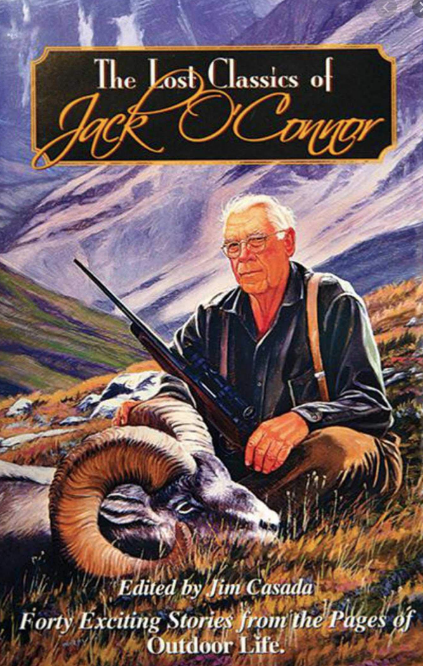 Other writers have had greater technical knowledge, hunted more, and helped develop new calibers and loads, but, when it comes to writing for the average shooter, O’Connor ranks first. Literate, a masterful storyteller, and unabashedly independent (he never sold his soul to any gunmaker or ammunition company, though he had his favorites), he remains immensely enjoyable. The Rifle Book is the place to start, followed by The Shotgun Book. You can find a full bibliography of his writings in The Lost Classics of Jack O’Connor, which I edited.
Other writers have had greater technical knowledge, hunted more, and helped develop new calibers and loads, but, when it comes to writing for the average shooter, O’Connor ranks first. Literate, a masterful storyteller, and unabashedly independent (he never sold his soul to any gunmaker or ammunition company, though he had his favorites), he remains immensely enjoyable. The Rifle Book is the place to start, followed by The Shotgun Book. You can find a full bibliography of his writings in The Lost Classics of Jack O’Connor, which I edited.
Elmer Keith
 Keith both despised and was the antithesis of O’Connor. He liked guns that had punch and produced lots of noise and recoil. While only marginally literate, he told gripping tales; shot a lot; and, with the help of excellent editors, garnered a huge following. The title of his autobiography, Hell, I Was There!, offers a window into his personality, while Sixguns and Big Game Rifles and Cartridges also merit attention. The little man in the big cowboy hat could be obstinate and ornery, but there’s no denying that he could entertain.
Keith both despised and was the antithesis of O’Connor. He liked guns that had punch and produced lots of noise and recoil. While only marginally literate, he told gripping tales; shot a lot; and, with the help of excellent editors, garnered a huge following. The title of his autobiography, Hell, I Was There!, offers a window into his personality, while Sixguns and Big Game Rifles and Cartridges also merit attention. The little man in the big cowboy hat could be obstinate and ornery, but there’s no denying that he could entertain.
Warren Page
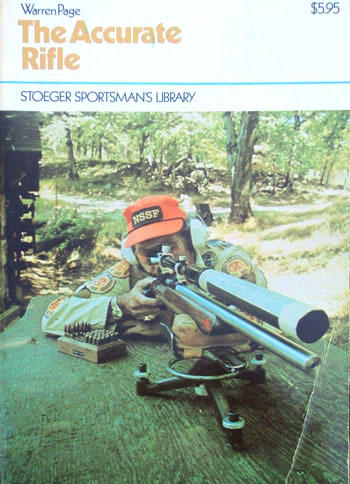 Likeable in print and the ultimate curmudgeon in person (the latter is by no means unique to Page among gun writers), he served as the shooting editor for Field & Stream for a quarter of a century, beginning in 1947, and helped develop the .243 Winchester. His two key books, One Man’s Wilderness and The Accurate Rifle, should be more widely read than they are today.
Likeable in print and the ultimate curmudgeon in person (the latter is by no means unique to Page among gun writers), he served as the shooting editor for Field & Stream for a quarter of a century, beginning in 1947, and helped develop the .243 Winchester. His two key books, One Man’s Wilderness and The Accurate Rifle, should be more widely read than they are today.
Townsend Whelen
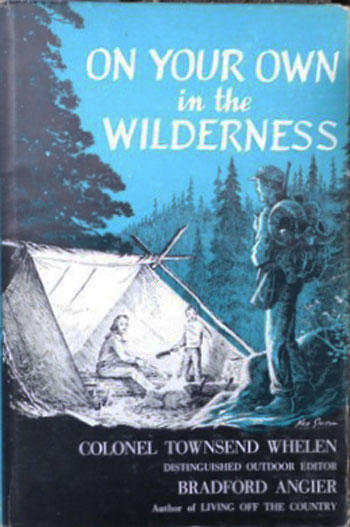 If you asked me which of the old-time gun writers I’d most like to have spent time with, “Townie” Whelen would win, hands down. He was the master of practicality, and every avid outdoorsman should read his On Your Own in The Wilderness (with Bradford Angier) and Mister Rifleman, an autobiographical work that Angier also helped complete. Whelen’s other books of note include The American Rifle, Big Game Hunting, Why Not Load Your Own!, The Best of Colonel Townsend Whelen, The Ultimate in Rifle Precision, and Amateur Gunsmithing. Perhaps no quotation by a gun writer has been repeated more frequently than his suggestion that “only accurate rifles are interesting.”
If you asked me which of the old-time gun writers I’d most like to have spent time with, “Townie” Whelen would win, hands down. He was the master of practicality, and every avid outdoorsman should read his On Your Own in The Wilderness (with Bradford Angier) and Mister Rifleman, an autobiographical work that Angier also helped complete. Whelen’s other books of note include The American Rifle, Big Game Hunting, Why Not Load Your Own!, The Best of Colonel Townsend Whelen, The Ultimate in Rifle Precision, and Amateur Gunsmithing. Perhaps no quotation by a gun writer has been repeated more frequently than his suggestion that “only accurate rifles are interesting.”
Paul Curtis
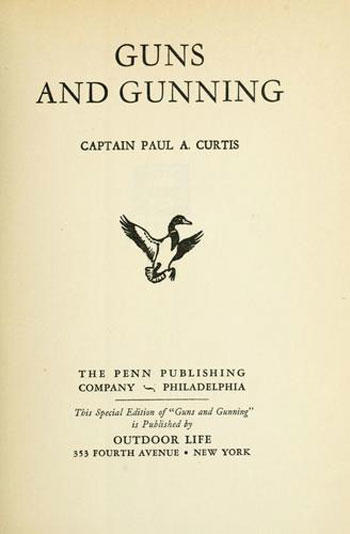 This name will likely be unfamiliar to many sportsmen, but, in the golden era of gun and hunting writers, Curtis was one of the best. For two decades, from the end of World War I until he committed suicide (an all-too-common occurrence among gun writers), Curtis was a major presence in national magazines. He wrote five books, but Guns and Gunning and Sporting Firearms of Today in Use are of the greatest interest.
This name will likely be unfamiliar to many sportsmen, but, in the golden era of gun and hunting writers, Curtis was one of the best. For two decades, from the end of World War I until he committed suicide (an all-too-common occurrence among gun writers), Curtis was a major presence in national magazines. He wrote five books, but Guns and Gunning and Sporting Firearms of Today in Use are of the greatest interest.
Charles Askins, Jr.
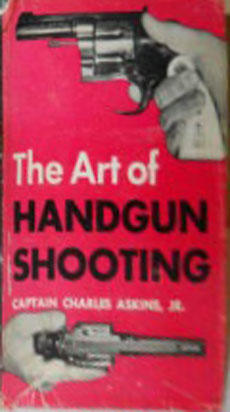 Since Charles Askins, Sr. was a gun writer, as well, the two Askins are easily and often confused. However, the younger was more prolific than his father, though the latter wrote a first-rate book about shotguns. The best place to start with Askins, Jr. is Unrepentant Sinner, his autobiography. By all accounts he was a highly temperamental man, involved in shenanigans that would result in hard time today, but there’s no doubting his expertise in works such as The Art of Handgun Shooting, The Gunfighters, and The African Hunt.
Since Charles Askins, Sr. was a gun writer, as well, the two Askins are easily and often confused. However, the younger was more prolific than his father, though the latter wrote a first-rate book about shotguns. The best place to start with Askins, Jr. is Unrepentant Sinner, his autobiography. By all accounts he was a highly temperamental man, involved in shenanigans that would result in hard time today, but there’s no doubting his expertise in works such as The Art of Handgun Shooting, The Gunfighters, and The African Hunt.
William H. “Bill” Jordan
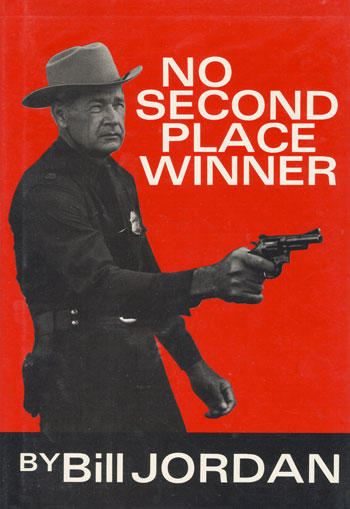 Jordan was nowhere as prolific as the other writers on this list, but his first-hand experiences were in a class of their own; there may never have been a man faster with a handgun. His book, No Second Place Winner, has become a must-read for police-handgun enthusiasts, but you’ll need to dig up his magazine writings to really gain an appreciation for him. Someone could do his legacy and the shooting world a favor by anthologizing these pieces.
Jordan was nowhere as prolific as the other writers on this list, but his first-hand experiences were in a class of their own; there may never have been a man faster with a handgun. His book, No Second Place Winner, has become a must-read for police-handgun enthusiasts, but you’ll need to dig up his magazine writings to really gain an appreciation for him. Someone could do his legacy and the shooting world a favor by anthologizing these pieces.
Michael McIntosh
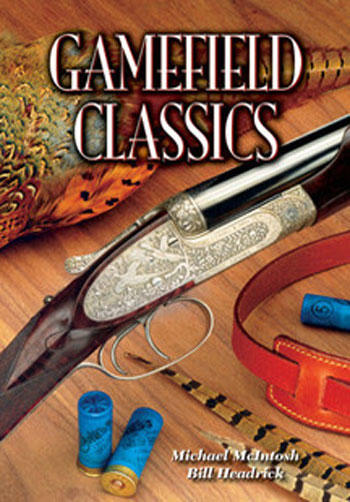 McIntosh is the only writer listed here whom I knew personally, as we were both longtime columnists for Sporting Classics. McIntosh wrote with grace and a distinctive style, and he really knew shotguns. Mind you, his interests and knowledge ranged widely, but posterity will likely remember him, first and foremost, as a shotgun writer. His major works include Best Guns, Shotguns & Shooting, Shotgun Technicana, A. H. Fox: The Finest Gun in the World, The Big-Bore Rifle, and Gamefield Classics.
McIntosh is the only writer listed here whom I knew personally, as we were both longtime columnists for Sporting Classics. McIntosh wrote with grace and a distinctive style, and he really knew shotguns. Mind you, his interests and knowledge ranged widely, but posterity will likely remember him, first and foremost, as a shotgun writer. His major works include Best Guns, Shotguns & Shooting, Shotgun Technicana, A. H. Fox: The Finest Gun in the World, The Big-Bore Rifle, and Gamefield Classics.
I can already hear readers muttering, Where are George Nonte, Skeeter Skelton, Jim Carmichael, David Petzal, Sam Fadala, Bryce Towsley, “Pondoro” Taylor, Jeff Cooper, Terry Wieland, Wayne Van Zwoll and countless others? These writers are all of note but many are still living, while others are just not at the top of my preferences.











